Why do you need to know about NFT trends? Well, whether you like the idea of NFTs or not, some of these upcoming trends could change the way we experience the web, brand products, buy and sell art, and even create and experience music. And according to Bored Ape Yacht Club member Jace Kay, 2022 sounds like the year the promise of Web 3.0 and NFTs will really take off.
If this sounds a lot, and you still don’t really get what NFTs are (you’re not alone!), see our what are NFTs explainer as well as our guide to how to make and sell an NFT.
But trust us when we say that when it comes to NFTs, Kay knows what he’s talking about. He is not only a member of BAYC, one of the most successful NFT groups, he also co-founded social music streaming app Stationhead with Ryan Star, and is the creator of the famous Facebook Lemon AR filter.
Still not convinced NFTs are worth bothering with? Bored Ape Kay has a clear example: “In 1996 I bought my first Apple computer, for like $3,200. […] But if I just bought Apple stock, instead, I would have never had to work a day in my life. In the new world [of NFTs], when you buy the ‘computer’ you’re owning a piece of the brand. So when it blows up, you’re still able to get a piece of that.”
Not one to ignore a trend, Kay has formed virtual music group The NFTs with the release of their first song, ‘I’ve got a cool cat too’ and tapped into his own NFT group the StereoheadZ Music Club to cast its stars. Read on to discover how according to Kay, music, NFT casting, and more will dominate NFTs and digital trends in 2022…
01. NFT avatar casting
The advantage of NFTs over traditional IP creation is that you can own a piece of a wider brand, and make money off it. NFTs such as Bored Ape Yacht Club and StereoheadZ enable users to mint their own art for the group, bringing a new sense of creativity to a community of artists, animators and musicians.
In the case of Jace Kay’s NFTs band, the personality Avatars were sourced from the community and payments returned to those artists. It helped that an as yet secret rock star was part of the StereoheadZ Music Club.
In 2022 expect more of this “Avatar Casting” as Kay calls it, to take off. He and the BAYC have many projects in the works, and members can put up their Bored Apes or StereoheadZ for use, and get a cut of the profits. This ties into another NFT trend for 2022…
02. Community owned branding
Giving IP control to a community to “take and spin into new directions that the parent brand would never have done in the past adds value”, says Kay. Using a blockchain and NFT offers primary and secondary resell rights, ensuring an artist is always paid for future use of their work. Loosening control of an IP enables growth and creativity, and artists get paid for their input and work at every stage.
“Take Bored Ape Yacht Club as an example,” says Kay, “it was nothing before May [2021] and now it’s one of the biggest brands in the world, almost, and it’s partnered with Adidas and others.”
Will we see the likes of Disney and large brands share their IP with NFT communities? Not likely, but this kind of approach to community-led marking and branding will find a place even in large corporations that will turn to NFT communities and groups to promote new products. If you create a Bored Ape and set it up for avatar casting, your art could be fronting a Coke ad next Christmas.
03. Ethereum 2.0 will solve its energy problem
The bored elephant in the room for NFTs is the huge carbon footprint generated to create one. A single transaction on the Ethereum blockchain uses as much power as the conventional household over a day and a half. Ethereum is “burning energy, like driving a car with your foot floored on the gas with the brakes on,” says Kay. “It doesn’t have to be that way. And it’s changing. Ethereum 2.0 is going to be slowly rolling out next year and it’s going to make a massive difference.”
Kay describes how Ethereum’s current “pipe” isn’t big enough for the large number of people who want to use it and so you have to pay higher costs to go through.” Ethereum 2.0 will expand that pipe, bringing down costs. Ethereum 2 will lower fees, offer higher output, and boost the value of NFTs created on the blockchain.
04. Tokenisation and gaming
This is a big one. Next year will see NFTs grow from their use to promote art and will be about utility – whether that’s gaming or access to rare communities (tied to avatar casting and marketing for Web 3.0). We already see this in video games with AAA publishers like Ubisoft buying into a blockchain for players to buy and unlock items that now have actual value. Axion Infinity is another ‘play-to-earn’ adopter, which is now valued at “$6 billion” and players can earn $15 dollars an hour from NFT rewards.
Kay says: “A lot of the NFT projects are trying to do tokenisation, which is like you’re getting more value from it. And these tokens can actually be sold on the secondary market. If you do it right, it has a lot of power.”
The metaverse (see our what is the metaverse explainer) will truly start in 2022, and NFTs will be at the heart of this immersive tech. The advantages of blockchain, crypto currencies and NFTs will be served directly inside the metaverse, instantly pushing aside the mumbo-jumbo barriers to entry. But Kay believes it only really begins with Apple and its seamless approach to UX and UI.
“The key thing is, it’s going to be Apple and their proper device that pushes everything to the next level, kinda like they did with the App Store,” says Kay. The catch could be the rumoured price tag of the Apple VR headset which may come in around $3000 the high-end AR/VR tech. Could this be where Meta/Facebook and Oculus steal the lead when it comes to VR headsets? Not according to Kay, who has no faith in the social media giant.
“[Meta’s] behind the curve, they’re also on the wrong side of it. They’re gonna screw up the metaverse. Meta is just a recipe for disaster,” says Kay, who says there won’t be just one metaverse, it’ll be a decentralised mix of apps, events, spaces, and platforms. “Facebook will always try to make it their metaverse, and you can sell your NFTs in it but it will be centralised, and we’ve got to not let that happen,” he adds.
06. Web 3.0 will take off
“NFTs are made for Web 3,” says Kay. While earlier iterations of the web are geared to reading (seeing data) and reading and writing (social media and experiences), Web 3.0 is about “having ownership and getting rewards”, in worlds and games such as Decentraland and Fortnite. The evolution of the internet with NFTs goes arm-in-arm and it’ll really get kickstarted in 2022.
07. Music NFTs will takeover
Music and NFTs will be big in 2022, Napster big. Kay has formed virtual band The NFTs with fellow Bored Apes and there will be more to come. But NFTs will be more universal in the music space. Jack Dorsey stepped down as Twitter CEO to run Block (formerly Square) with the aim to get streaming services such as Tidal to adopt music NFTs.
Kay’s other project, as well as the StereaheadZ NFT – a decentralised music label and community – is Stationhead, a live music and broadcast platform. Stationhead enables you to broadcast live shows and even stream your music from Apple Music and Spotify, and it’s legal.
Platforms like Stationhead will exist in and across the metaverse where listeners can drop in and chat or release their own music. NFTs on the blockchain will reward fans who follow a band or track royalties for musicians.
Kay’s band The NFTs will be one of the first, with fans who support the group through the StereoheadZ Music Club NFT earn rewards and can even be cast to help develop the band – Kay says the animators for a future music video will be sourced from the SMC.
08. Real world experiences
“Another thing that’s starting to happen, but it’s kind of fun and is tied into the kind of utility you get, is real world experiences,” says Kay. If you’re supporting an NFT project it means you’re invested in a community and one of the rewards will be regular events for holders.
The Bored Ape Yacht Club NFT holders have already started, with an NYC party in 2021 that saw 2,000 BAYC NFT holders gather in a secret warehouse location to watch Beck, Chris Rock and a specially reformed of The Strokes take to the stage. “These IRL [in real life] experiences are definitely going to be a huge, huge thing.”
09. Digital tagging and ownership
At the moment, says Kay, we talk about NFTs giving artists and creators ownership of digital content, but in the future everything will have an NFT. “Right now we’re talking about art and music, but we’re also starting to talk about seeds, about buying food […] everything you buy will have a digital footprint that lets you know who owns what,” says Kay.
Imagine if Adele buys a sweater, and then sells it, you’ll know that it was Adele’s sweater and its value goes up. “Having digital tags to physical items and experiences is beginning to happen. It opens up a lot more opportunities to build interesting things with transparency.”
10. The rise of Personality NFTs
“I think this year [2022] we’ll definitely start seeing more of these personalities that are NFTs,” says Kay. You’ll see apps that enable artists to perform as an NFT personality rather than themselves. Kay knows of one Snapchat app in development that enables a user to remove themselves completely and be replaced by a Bored Ape. “It looks real,” he says. “It’s pretty amazing.”
Expect to see musicians and celebrities adopting NFT personalities in 2022. It’s already happening, the musician Teflon Sega only exists in the Metaverse as a performer but expect more renowned stars to embrace the anonymity of performing to select fans under a digital persona. This also started with Gorillaz and will now be taken to the next level in 2022.
Read more
Credit: Source link


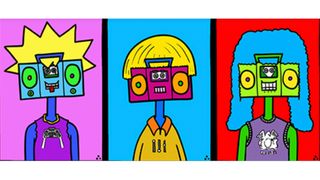
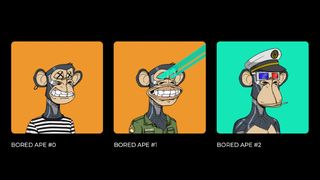

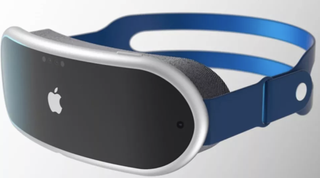
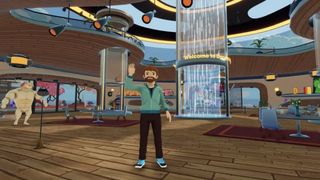
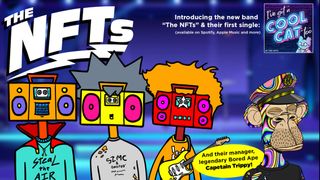
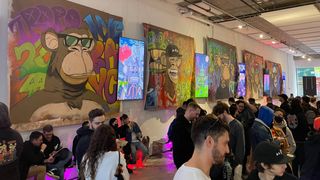
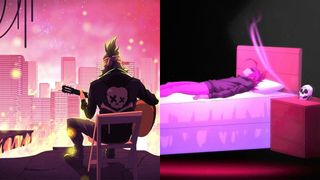














 Bitcoin
Bitcoin  Ethereum
Ethereum  Tether
Tether  Solana
Solana  XRP
XRP  Dogecoin
Dogecoin  USDC
USDC  Cardano
Cardano  Lido Staked Ether
Lido Staked Ether  TRON
TRON  Avalanche
Avalanche  Stellar
Stellar  Toncoin
Toncoin  Shiba Inu
Shiba Inu  Wrapped stETH
Wrapped stETH  Wrapped Bitcoin
Wrapped Bitcoin  Polkadot
Polkadot  Chainlink
Chainlink  Bitcoin Cash
Bitcoin Cash  WETH
WETH  Sui
Sui  NEAR Protocol
NEAR Protocol  Pepe
Pepe  LEO Token
LEO Token  Litecoin
Litecoin  Aptos
Aptos  Uniswap
Uniswap  Wrapped eETH
Wrapped eETH  Hedera
Hedera  Internet Computer
Internet Computer  USDS
USDS  Cronos
Cronos  POL (ex-MATIC)
POL (ex-MATIC)  Ethereum Classic
Ethereum Classic  Render
Render  Artificial Superintelligence Alliance
Artificial Superintelligence Alliance  Bittensor
Bittensor  Ethena USDe
Ethena USDe  WhiteBIT Coin
WhiteBIT Coin  Arbitrum
Arbitrum  Dai
Dai  Bonk
Bonk  Stacks
Stacks  Filecoin
Filecoin  OKB
OKB  Cosmos Hub
Cosmos Hub  MANTRA
MANTRA